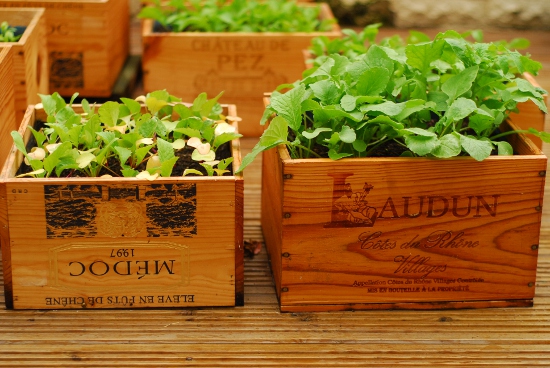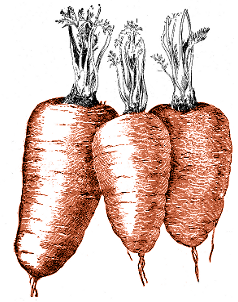Posts tagged ‘spring onion’
Posted in Retrospective, The Old Garden In Bristol on Sunday, October 16th 2011 (9.05 AM).
This post is, unfortunately, going to be rather low on photos compared to those previous, because plants that aren’t growing well, are dying off or somehow going wrong, aren’t really inviting subjects for the camera. I’ve resisted the temptation, though, to title it “Failures”, because all of these plants gave something to the garden, even if it was just a clump of foliage or something for the local caterpillars to eat.
Pattypan squash: this is an example of why you should be careful what plants you let into your garden. We decided we wanted a pattypan squash plant: they can look rather attractive, and we always use plenty of squash in cooking. By the time we decided we wanted one, though, it was definitely a bit late in the season to be growing one from seed. We went down to one of the local garden centres; all the pattypans they had looked to have signs of mildew on their leaves. We bought the best we could find, but the signs of mildew did indeed turn into worse mildew. It fruited, but its fruits were hardly an inch across. Of course, I’ve heard since, this year has been a bad year for squashes, but I’m sure that a healthier plant would have had a better chance of success.
Dill: We love dill, particularly with salmon in the Scandinavian style, so dill had to be a must for the garden. We planted plenty of dill seeds, and they sprung right up, right away. But then they didn’t stop springing. Every dill plant we grew turned into a tall, spindly thing, four or five feet high but with barely any usable foliage. Pinching out the tips didn’t seem to help.
Spring onions: these we grew from seed, and they started out well. They seemed to be taking a while, but we weren’t too worried, having picked a variety with a low chance of bolting. Then, though, a period of hot weather followed by heavy rain ruined the majority of the plants, snapping the stems. A handful have grown back from that, but neither those nor the ones which avoided the rain in the first place have really reached a harvestable thickness.
Sweet peas: the idea with these was: companion plants around our green beans. The problem with them was: they grew too well. They grew around the beans, over them, taller than them, almost swallowing them up. And then didn’t even flower. The problem, maybe, is that sweet peas aren’t bred to grow in vegetable-quality compost, which is possibly an issue with any companion planting scheme that involves decorative and produce plants mixed in together.
Japanese saltwort: we spotted this in one of the local garden centres, the excellent Riverside co-operative. We bought it because it was intriguing, and unusual. It grew, grew well. The problem, though was that we didn’t really know what to do with it; and its heart quickly became dead and woody, the living parts straggling over the edge of its pot. I have the feeling it is one of those plants which, if not kept in a container, could easily take over an entire garden.
What to learn from all this? Well, next year, we’ll definitely be keeping our spring onions rather more sheltered. We’re on the hunt, too, for a different variety of dill to try. The most important thing to remember, though: however much we want a particular variety of plant in the garden, only let it come in if it’s healthy.
dill, japanese saltwort, pattypan squash, saltwort, scallion, spring onion, squash, sweet pea
Posted in Garden Diary, The Old Garden In Bristol on Sunday, September 18th 2011 (9.43 PM).
Since the last “week in the garden” post, we have:
- Done nothing, because we went away on another holiday.
And, the garden hasn’t enjoyed it at all, although I have no idea what the weather was doing. Some of the beans are healthy, but some are rather withered and shrivelled. The spring onions, lovely and healthy a couple of weeks ago, are now looking fairly unrecoverable. The bolt-free coriander seeds we carefully sourced have come into flower, which makes me think it was probably too hot and dry to leave a container garden to its own devices for a week. On the bright side, the Swiss chard is happily sprouting up again with some vigour, when we thought we had harvested all we could get from it.
Still, we always said: after the September holiday we would start planning next year’s garden; start getting ready for the winter and working out our planting. Next weekend we start hacking back the perennials and working out how long it is worth keeping the beans and so on in their planters for; and after that we sit down with pen, paper, charts and calendars, working out what to plant when. So, coming up soon: some posts on how our garden is arranged, situated, and what we think we can do with the space.
autumn, coriander, diary, disaster, green bean, holiday, runner bean, scallion, spring onion, swiss chard
Posted in Experimentation, Garden Diary, Photobloggery, The Old Garden In Bristol on Wednesday, September 7th 2011 (10.14 PM).
Since the last “week in the garden” post, we have:
- Harvested the first green beans.
And, because we went away for a long weekend, that was about it. The garden didn’t take too kindly to us going away, either. Or, rather, it didn’t take too kindly to the weather: the combination of dry, hot days without us there for watering, followed by heavy rain, has not had good results. The spring onions have suffered in particular, and the runner beans have also had problems.
Back in the mists of time – well, August – before this blog had properly started, we sowed a few boxes of quick-growing things to give us some more produce into the autumn. As I mentioned then, I tried an experiment. All of the seeds were sowed into previously-used compost; and for each seed, I sowed one box into compost that had been used to grow peas, and one box into compost that hadn’t. It’s three-and-a-half weeks later now, and the results are pretty clear, at least for the radishes.

The pea compost is, I’m fairly sure, the one on the right. Science!
bean, compost, diary, experiment, french bean, green bean, nitrogen, pea, radish, scallion, science, spring onion, weather
Posted in Garden Diary, The Old Garden In Bristol on Tuesday, August 30th 2011 (7.10 PM).
This week, we have:
- Continued harvesting runner beans, and also the first of the green beans
- Harvested a box of radishes, leaving the two we planted a couple of weeks ago still developing.
- We’ve still not quite got the hang of radishes. We thinned out the still-growing boxes, rather more than previously, in the hope of getting a nice bulb on every plant.
- Harvested the last of the carrots.
- Harvested pretty much all of the mature Swiss chard – the baby leaves are still untouched
- Thinned out the smallest beetroot plants.
Before long, I suspect, we’ll have to look at chopping back some of our perennials for the winter. The camomile plant is definitely looking a bit too straggly and overgrown; the sage needs harvesting for its own health; and so, I suspect, do the chives, having taken a bit of a battering in the recent weather. We’re also not entirely sure when would be best to start harvesting our spring onions. They feel as if they’ve been in the ground an awfully long time, some of them, but their stems don’t seem to have reached a good width yet. Well, this always was intended to be a Learning Year.
bean, beetroot, camomile, carrot, chard, green bean, radish, runner bean, sage, scallion, spring onion, swiss chard, thinning


